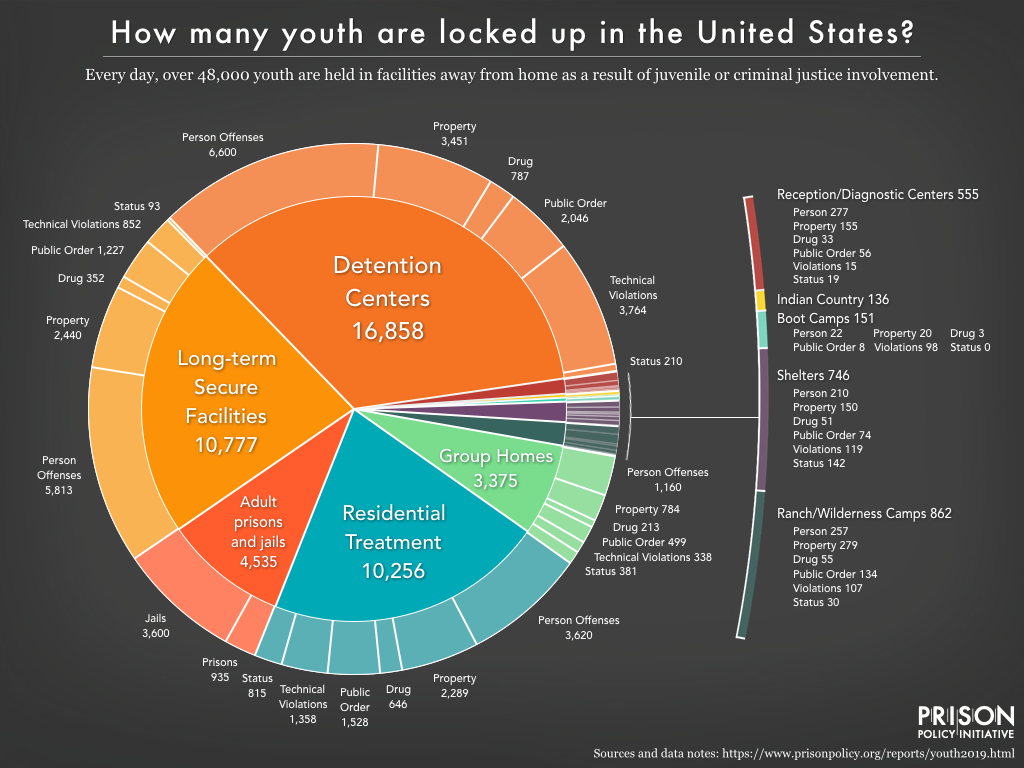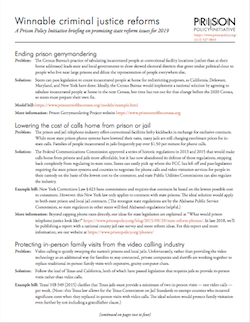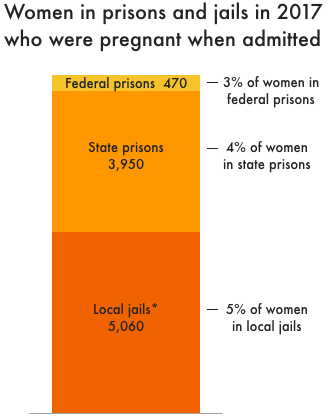At a time when cutting the adult prison population by 50% seems radical to many people, states have already cut the number of confined youth by 60% since 2000.
December 19, 2019
Why are 48,000 children and teenagers locked up in the United States, and where exactly are they? How are the juvenile justice system and the criminal justice system similar, and how are they different? In a new infographic and report, the Prison Policy Initiative answers these unexpectedly difficult questions about youth confinement.

Youth Confinement: The Whole Pie 2019 reveals failures in the juvenile justice system that mirror failures in the adult system, including:
- Unnecessary pretrial detention. On any given day, 9,500 youth – or 1 in 5 youth in confinement – are locked up before trial.
- Incarceration for the most minor offenses. 19% of youth in juvenile facilities are locked up for “technical violations” of probation or parole, or for status offenses (behaviors for which an adult would not be prosecuted).
- Glaring racial disparities. While only 14% of children under 18 in the U.S. are Black, 42% of boys and 35% of girls in juvenile facilities are Black.
But the number of youth in confinement is also falling dramatically. “At a time when cutting the adult prison population by 50% strikes many people as radical, states have already cut the number of confined youth by 60% since 2000, and that trend is continuing,” said report author Wendy Sawyer. The report describes state reforms that have helped shrink the juvenile justice system, such as:
- Reducing incarceration for certain offenses, including status offenses, technical violations, and misdemeanors
- Closing large detention facilities and developing new community-based supervision and treatment programs
- Limiting the amount of time youth may be incarcerated or under court supervision
“States have reduced youth incarceration without seeing an increase in crime, which is very encouraging, but there are still far too many youth in confinement,” said Sawyer, “Today, there are 13,500 youth locked up away from home for drug possession and low-level offenses, not to mention 7,000 other youth detained before trial. That means this country still has a lot of work to do.”
For the full report and more infographics, see https://www.prisonpolicy.org/reports/youth2019.html.
We list 24 high-impact policy ideas for state legislators looking to reform their criminal justice systems.
by Wanda Bertram,
December 12, 2019
This report has been updated with a new version for 2022.
 State legislatures can determine the future of mass incarceration. That’s why we just published — as we do every December — a report on 20+ winnable criminal justice reforms that state legislators can take on.
State legislatures can determine the future of mass incarceration. That’s why we just published — as we do every December — a report on 20+ winnable criminal justice reforms that state legislators can take on.
We publish this report as a PDF with links to more information and model bills, and we’ll soon send it to state legislators across the country. This year, our list of reforms ripe for legislative victory includes:
- Eliminating probation fees and regulating privatized probation services
- Banning Departments of Corrections taking kickbacks from prison retailers
- Decreasing state incarceration rates by reducing jail populations
- Repealing ineffective and harmful “sentencing enhancement” zones
- Offering medication-assisted opioid treatment to reduce deaths in prison
- Protecting in-person visits and letters from home in local jails
- Ending automatic driver’s license suspensions for nonpayment of fines and fees, and for drug offenses unrelated to driving
- Capping maximum probation terms
- Reducing or eliminating jail time for technical violations
- Reducing barriers to housing for formerly incarcerated people
Our full report on winnable criminal justice reforms includes more ideas for reducing state prison populations, eliminating burdensome costs for incarcerated people, supporting people leaving prison, and promoting public health and community safety.
Will your state be working on any of these reforms? We’re looking forward to the progress we can make together in 2020!
Our 50-state survey finds that in spite of national standards, most states lack important policies on prenatal care and nutrition for pregnant women.
by Roxanne Daniel,
December 5, 2019
This past August, released surveillance footage showed 26-year-old Diana Sanchez alerting Denver County Jail deputies and medical staff that she was in labor just hours before she gave birth to her son, alone in her cell. With her pleas ignored by staff, Sanchez was forced to give birth without any medical aid or assistance. Her experience is not isolated, as a number of reports by women in prisons and jails across the country have revealed a similar disregard for pregnant women’s basic needs.
What’s more, the documentation of pregnancies and pregnancy care is sparse, sometimes anecdotal, and rarely generalizable on a national level. The most recent data from the Bureau of Justice Statistics (BJS) was collected more than 15 years ago. In 2002, BJS found that 5% of women in local jails were pregnant when admitted. For prisons, BJS reported that in 2004, 4% of women in state prisons and 3% of women in federal prisons were pregnant upon admission. The government has not released any further national data since.
 These estimates are based on the number of women under local, state, and federal jurisdiction in 2017 and the percentages of women in prisons and jails who were pregnant when admitted, as reported by the Bureau of Justice Statistics. *Note that the estimate for women in local jails is based on the jail population on a single day, not the much greater number of women admitted to jail over the course of a year.
These estimates are based on the number of women under local, state, and federal jurisdiction in 2017 and the percentages of women in prisons and jails who were pregnant when admitted, as reported by the Bureau of Justice Statistics. *Note that the estimate for women in local jails is based on the jail population on a single day, not the much greater number of women admitted to jail over the course of a year.A recent study of 22 U.S. state prison systems and all U.S. federal prisons, published in the American Journal of Public Health, found a similar pregnancy rate; roughly 3.8% of the women in their sample were pregnant when they entered prison from 2016-2017. While the rate of pregnancy in prison may have remained stable since the early 2000s, the additional 10,000+ women imprisoned since then indicates that the number of women who are incarcerated while pregnant has grown, too. As long as the mass incarceration of women endures, incarcerated pregnancies will continue to rise.
Given the scale and stakes of this issue, it is imperative that correctional systems set policies that ensure the health and well-being of pregnant women in their custody. Provisions for adequate nutrition and prenatal medical care must be codified in policy to protect against negative health outcomes, such as miscarriages and low fetal birth weights, that can impact mothers and their children for the rest of their lives.
To see the extent to which these concerns are currently being addressed, we evaluated the policies of each state’s prison system and the federal Bureau of Prisons (BOP) to screen for adherence to nationally recognized guidelines. Troublingly, many states fail to meet even basic standards.
Continue reading →


 These estimates are based on the
These estimates are based on the 


